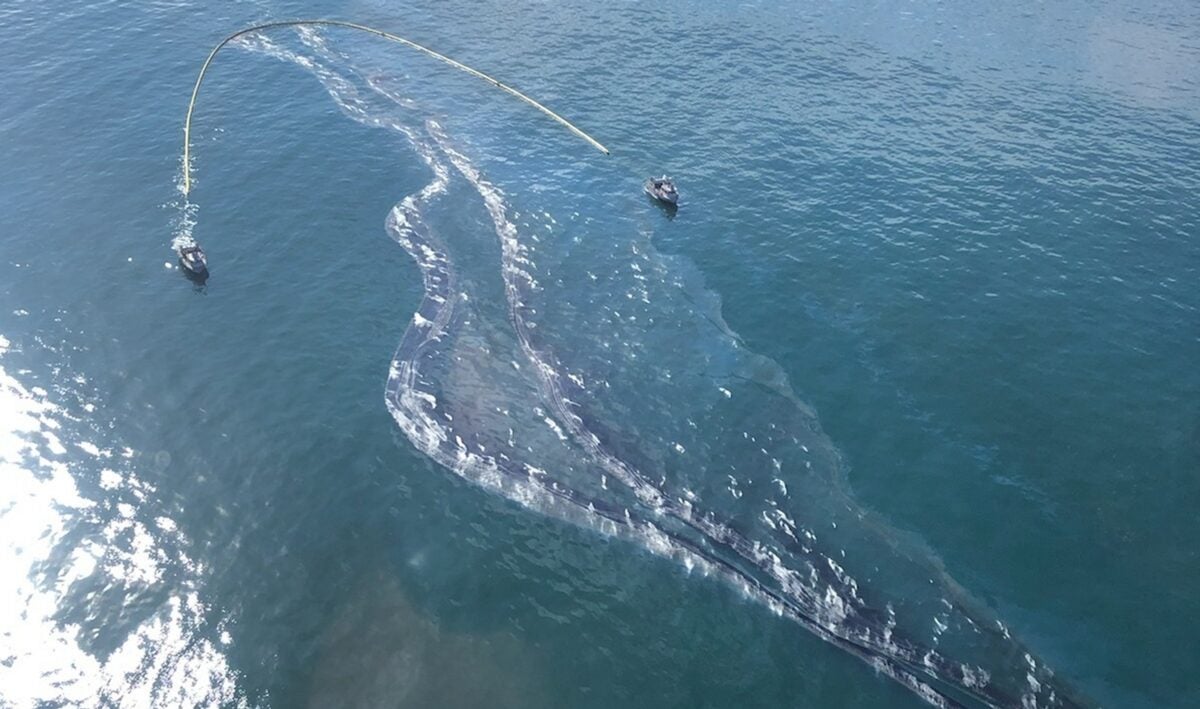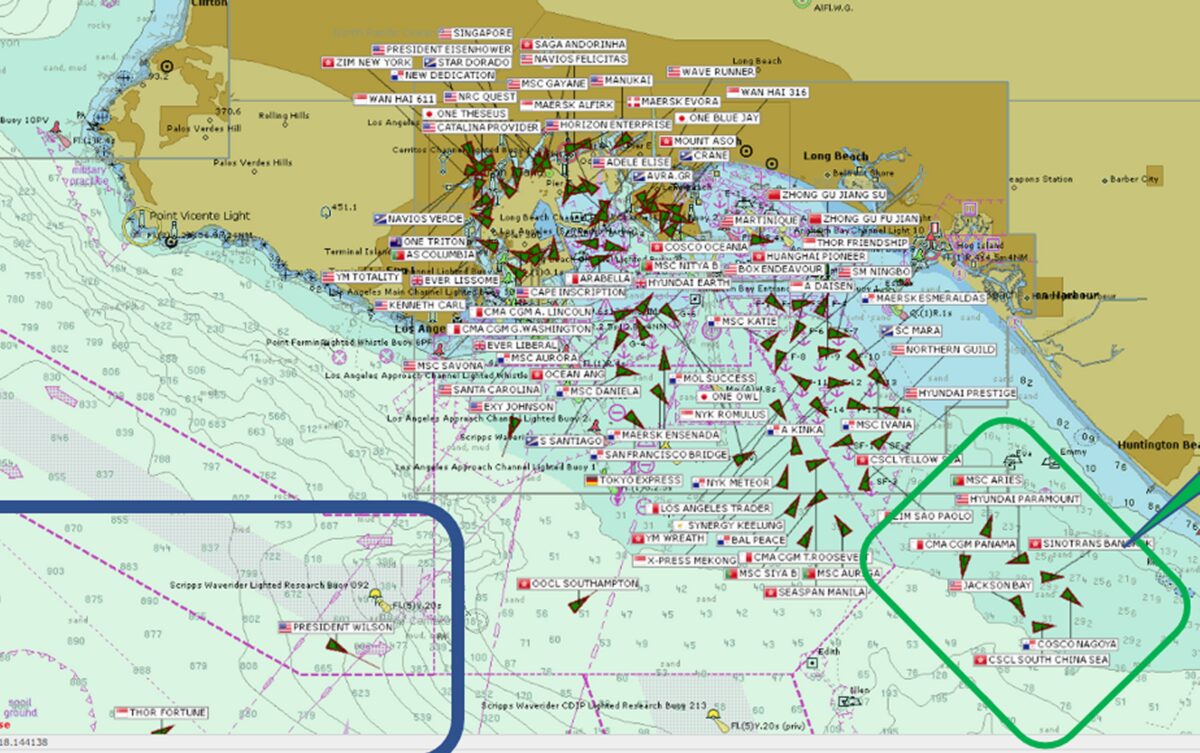Coincidence? Up to 144,000 gallons of oil is estimated to have spilled from a pipeline off scenic Huntington Beach, California, and within eyesight, an armada of commercial ships are stuck waiting at anchor or drifting. As of Tuesday, there 55 ships of all types with anchors physically dropped, including 38 container vessels.
During a press conference Tuesday, members of the response team didn’t outright blame one of these ships for weighing anchor, dragging the pipeline and causing it to puncture. But there was little other way to interpret what they said.

Coast Guard Capt. Rebecca Ore said that a remote-operated vehicle and divers found that 4,000 feet of the 17.7-mile pipeline was laterally displaced by 105 feet and a 13-inch slit was found in the pipeline, “which was the likely source of the release of oil.”
Martyn Willsher, CEO of Amplify Energy, the operator of the pipeline and platform, added, “That 4,000 feet of displacement of the pipeline — it has essentially been pulled like a bowstring that, at its widest point, is 105 feet away from where it was. It’s almost kind of a semicircle.”
Asked at the press conference whether the damage was consistent with an anchor strike, Willsher replied, “I’m not here to speculate about the cause, but the pipeline that has been displaced is a 16-inch steel pipeline, half an inch thick, covered with an inch of concrete. For it to be moved 105 feet is … not common.”
If it was a ship, the next question is which ship. Automatic identification system (AIS) ship-positioning data is available commercially, while the area is also overseen by Marine Exchange of Southern California and U.S. Coast Guard Vessel Traffic Service personnel.
Ore was asked at the press conference whether any ship that had been in the area of the pipeline breach had been identified. “At this point I have no confirmation of a vessel above the point where the pipeline was displaced,” she said.
The Marine Exchange declined to comment, referring questions from American Shipper to the unified spill response command.
The spill is not affecting cargo operations. According to the Port of Los Angeles, “While some vessels waiting to come into San Pedro Bay may need to be cleaned, Port of Los Angeles operations and arrivals have not been impacted.”

Nor does the spill appear to be altering the anchorage situation. The first anchorage spots to be filled are those closer to the ports. After they are used up, ships fill 10 “contingency” anchorages off Huntington Beach.
As of Tuesday, nine of the 10 Huntington Beach slots were still full, comprising seven container ships and two tankers, according to data from the Marine Exchange. Given the surge of imports into the U.S. in 2021, the Huntington Beach contingency slots have been heavily utilized this year.
Looking forward, if investigators do determine that a ship caused the pipeline breach, there could be both specific and general fallout.
Specific in terms of the individual ship operator — and it’s even possible that the ship may still be there. The average wait time to get from anchor to berth in the Port of Los Angeles is now an all-time high of 10.7 days.
And general in terms of public perception of the massive anchorage queue. To date, the public has viewed it as an amusing spectacle. But if the spill and the environmental fallout are linked to the offshore “parking lot” in San Pedro Bay, some may view the pileup of waiting ships in a more negative light, the way many already see the offshore oil platforms.
Click for more articles by Greg Miller







